This post may contain affiliate links. Please see our disclosure policy.
Canning marinara sauce is a simple way to bring out the best in your home grown tomatoes, and this tested recipe is safe for water bath canning. Roasting concentrates the flavor and adds a hint of sweetness, and reduces cook time in the process.

Table of Contents
Marinara sauce is one of the most-used staples in our pantry, and once you’ve made it from scratch, it’s hard to go back to anything from the store. This roasted marinara sauce is packed with rich, concentrated tomato flavor thanks to oven roasting—an extra step that pays off in both taste and texture.
We make several batches of this sauce every summer when the tomatoes are coming in faster than we can keep up. Roma or plum tomatoes are the best for this recipe since they’re meaty and have less water, which makes for a thicker sauce and less cooking time. Roasting concentrates the flavor and adds just a hint of caramelized sweetness, especially when paired with roasted onions and garlic.
This version is adapted from a tested recipe in The All New Ball Book of Canning and Preserving, which means it’s been formulated with canning safety in mind. You’ll still need to add citric acid or bottled lemon juice for acidity (more on that below), but otherwise, it’s simple, flavorful, and perfect for filling your shelves with jars of homemade sauce.
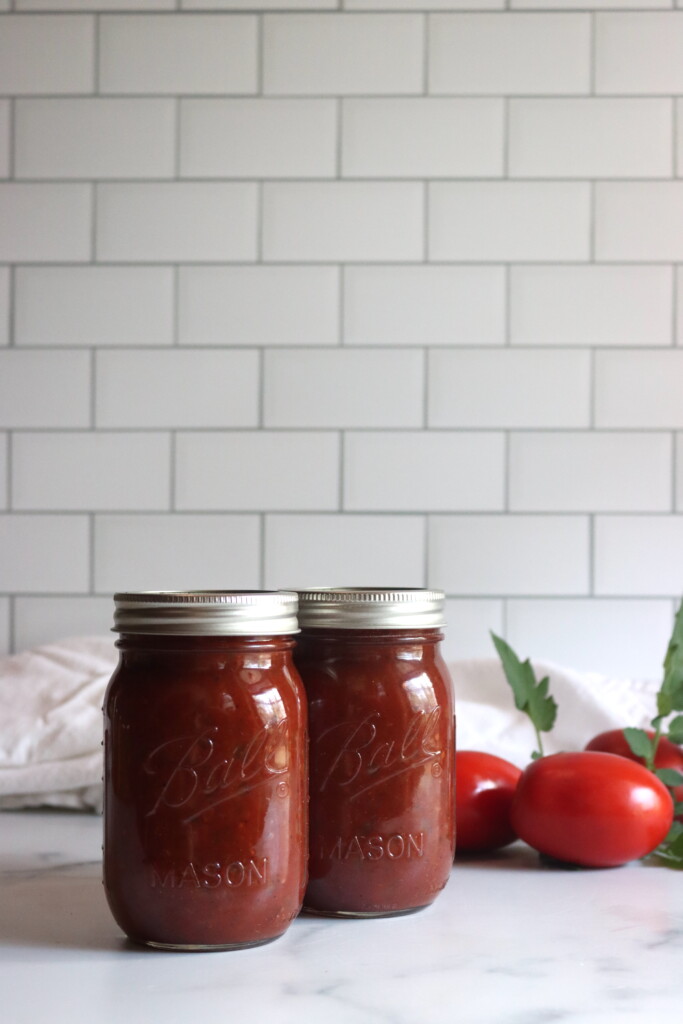
Why Roast the Marinara Sauce?
Roasting the tomatoes and onions before simmering creates a deeper, more developed flavor. It helps remove excess moisture from the tomatoes, reducing the need for long simmering to thicken the sauce. The natural sugars in both the tomatoes and onions caramelize slightly during roasting, adding complexity and sweetness without any added sugar.
This method also skips the messy blanching and peeling process often required in tomato canning recipes. Once roasted, the tomatoes go through a food mill to remove seeds and skins quickly—no slippery tomato peeling needed.
Ingredients for Roasted Marinara Sauce
This recipe yields about 8 pints or 4 quarts of rich, flavorful marinara sauce.
Each ingredient plays an important role in either building flavor, enhancing texture, or ensuring safe preservation. Here’s what you’ll need—and why it matters:
- Paste Tomatoes – Roma tomatoes are ideal because they’re meaty with fewer seeds and less water. That means a thicker sauce with less cooking time and a more concentrated tomato flavor. Roasting them brings out natural sweetness and adds depth.
- Onion – Roasted onions add sweetness and body to the sauce. They balance the acidity of the tomatoes and give the sauce a more complex, savory base.
- Neutral Oil or Cooking Spray – A bit of oil or a quick spray on the baking sheets keeps the tomatoes and onions from sticking and makes cleanup easier after roasting.
- Dry Red or White Wine – Wine deepens the flavor of the sauce and brings out the richness of the tomatoes. Red wine gives a bolder, earthier note, while white wine keeps it lighter and brighter. You can substitute 2 Tbsp of vinegar plus water if you’d like. If using vinegar, balsamic or white wine vinegar work well for best flavor.
- Salt – Salt enhances and balances all the flavors in the sauce. It’s not included for preservation—just for taste—so you can adjust slightly to your preference.
- Oregano – This classic herb gives the marinara its signature Italian flavor. It’s concentrated and aromatic, especially after simmering in the sauce.
- Black Pepper – Adds a touch of spice and warmth without overpowering the sauce. It pairs well with the garlic and oregano.
- Garlic – Garlic is essential in marinara for its bold, aromatic flavor. It adds depth and complexity that rounds out the sweetness of the tomatoes and onions.
- Bay Leaves – Bay leaves infuse the sauce with a subtle background flavor that makes everything taste more cohesive. Just remember to remove them before canning!
- Citric Acid (or Bottled Lemon Juice) – This is a must for canning safety. Tomatoes alone may not be acidic enough to prevent the growth of harmful bacteria during water bath canning. Adding citric acid or bottled lemon juice ensures the pH is low enough for safe shelf storage.
Each ingredient contributes to a marinara sauce that’s not just delicious—but also safe and stable for long-term canning.
How to Make Marinara Sauce for Canning
To start, preheat your oven to 375°F (190°C) and get your tomatoes ready. Wash them thoroughly and slice them in half. If you’d like, you can remove the cores, but don’t worry about peeling or seeding them at this stage. Arrange the tomato halves cut-side up in a single layer on rimmed baking sheets that have been lightly greased with vegetable spray.
Roast them for about 45 minutes, or until they’re soft, starting to brown around the edges, and releasing their juices. This step deepens the flavor and jumpstarts the breakdown process for a smoother sauce later.
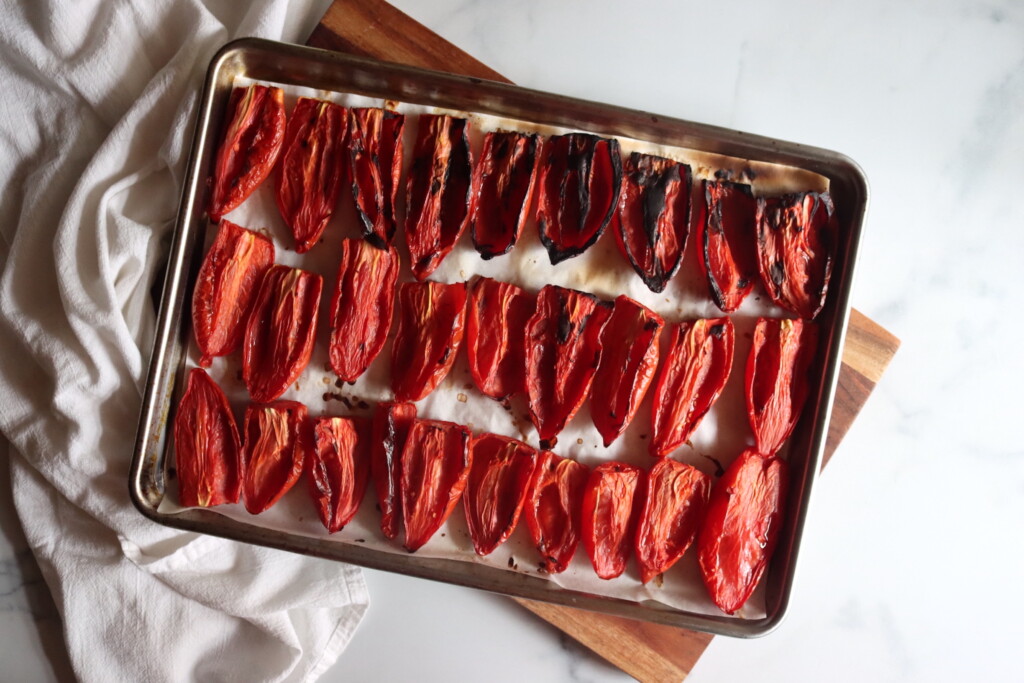
While the tomatoes are roasting, chop your onions and spread them out on a separate greased baking sheet. Pop them in the oven alongside the tomatoes and roast for about 20 minutes, stirring once or twice, until they’re golden and caramelized. The sweetness from the roasted onions pairs perfectly with the acidity of the tomatoes in the finished sauce.
Once the tomatoes have cooled slightly, run them through a food mill to remove the skins and seeds. If you don’t have a food mill, you can blend them and then strain through a fine mesh sieve to achieve a similar texture. Add the smooth tomato puree to a large stockpot, then stir in the roasted onions, dry wine (red or white works), salt, oregano, black pepper, minced garlic, and bay leaves. Bring everything to a boil, then reduce the heat and simmer uncovered for about 15 to 20 minutes, or until the sauce thickens to your desired consistency.
When the sauce is nearly done, it’s time to add the acid—this is crucial for canning safety. Stir in 2 teaspoons of citric acid or ½ cup of bottled lemon juice to lower the pH and make the sauce safe for water bath canning. Don’t skip this step, even if the sauce tastes tart. Once the acid is fully stirred in, remove and discard the bay leaves.
Now it’s time to get your jars ready. Sterilize your canning jars, lids, and rings, and keep them hot until you’re ready to fill. Ladle the hot marinara sauce into the warm jars, leaving ½ inch of headspace. Use a bubble remover or a non-metallic spatula to release any trapped air, then adjust the headspace if needed. Wipe the rims clean with a damp cloth, place the lids on, and screw the bands on until they’re fingertip tight.
Process the filled jars in a boiling water bath canner for 40 minutes, making sure they’re fully submerged with at least 1 inch of water over the tops. If you’re canning at an elevation above 6,000 feet, increase the processing time by 5 minutes. When the timer is up, turn off the heat and let the jars sit in the canner for another 5 minutes before carefully removing them to a towel-lined counter to cool.
After 12 to 24 hours, check the seals. If the lids don’t flex up and down when pressed, the jars are properly sealed. Any unsealed jars should be stored in the fridge and used within a week. Properly sealed jars can be stored in a cool, dark pantry and will keep for up to a year.
Altitude Adjustments
This canning recipe uses a water bath processing time of 40 minutes for both pints and quarts, but you’ll need to increase the processing time if you’re above 1,000 feet in elevation.
These are the altitude adjustments for canning marinara sauce:
- 0 to 1,000 ft: 40 minutes for both pints and quarts
- 1,001–3,000 ft: 45 minutes for both pints and quarts
- 3,001–6,000 ft: 50 minutes for both pints and quarts
- Above 6,000 ft: 55 minutes for both pints and quarts
Tips for a Success
- Tomato Selection: For the best sauce, use plum tomatoes (Roma or similar). These are dense, with fewer seeds and less water, making them ideal for sauces.
- Wine Variations: Feel free to use red or white wine depending on your flavor preference. Red wine will give the sauce a deeper, richer flavor, while white wine offers a slightly lighter taste.
- Acidity for Canning: Always add citric acid or lemon juice when canning tomato products to ensure a safe pH level. This helps prevent the growth of harmful bacteria and ensures the sauce will be shelf-stable.
- Customizing the Sauce: This marinara sauce is a great base, but you can always adjust it to your tastes. Add extra dried herbs like basil or thyme, or even a pinch of red pepper flakes if you like a bit of heat!

Roasted Marinara Sauce (Canning Recipe)
Equipment
- Food Mill for removing skins and seeds
Ingredients
Roasted Vegetables
- 20 lb. Paste Tomatoes, Roma tomatoes are a great choice for their meatiness and low water content
- 1 ½ cups onion, chopped, about 2 medium onions
- Neutral Oil or Cooking Spray, for greasing baking sheets
Marinara Sauce
- All Roasted Veggies from Above
- 1 cup wine, dry red or white wine, adds depth of flavor and acidity, see notes for substitutions
- 1 Tbsp salt
- 1 Tbsp dried oregano
- 2 tsp black pepper
- 6 cloves garlic, minced
- 2 medium bay leaves
- 2 tsp Citric Acid, or ½ cup / 125 ml bottled lemon juice for acidity
Instructions
Roast the Tomatoes
- Preheat your oven to 375°F (190°C).
- Wash the tomatoes and cut them in half. You can remove the cores if you prefer, but there’s no need to peel or seed them at this stage. Place them cut side up on greased, rimmed baking sheets in a single layer.
- Roast the tomatoes for about 45 minutes, or until they begin to soften, release juice, and start to brown at the edges. This roasting step intensifies the flavor and starts the breakdown process needed for a smooth sauce.
Roast the Onions
- While the tomatoes are roasting, spread the chopped onions on another greased baking sheet. Roast for about 20 minutes, stirring occasionally until golden and caramelized.
Prepare the Sauce
- Once the tomatoes are cool enough to handle, run them through a food mill to remove skins and seeds. If you don’t have a food mill, you can use a blender and then strain through a sieve for a similar result.
- Combine the smooth tomato puree with the roasted onions, wine, salt, oregano, pepper, garlic, and bay leaves in a large stockpot. Bring the mixture to a boil, then reduce heat and simmer uncovered for 15–20 minutes, or until the sauce thickens to your liking.
- To ensure the sauce is safe for water bath canning, you must acidify it. Stir in 2 teaspoons of citric acid (or ½ cup bottled lemon juice) to the pot. This step is non-negotiable for canning safety—don’t skip it, even if your tomatoes taste tart!
- Remove and discard the bay leaves once the sauce is ready.
Fill and Seal Jars
- Prepare your jars, lids, and rings. Keep the jars hot until you’re ready to fill them.
- Ladle the hot sauce into jars, leaving ½ inch headspace. Use a non-metallic utensil to remove air bubbles, adjust the headspace as needed, and wipe the rims clean.
- Apply lids and bands, tightening them to fingertip tight.
Water Bath Canning
- Process the jars in a boiling water bath canner for 40 minutes (for both pints and quarts), making sure they are fully submerged with at least 1 inch of water above the lids.
- If you live above 6,000 feet elevation, increase the processing time by 5 minutes.
- When the time is up, turn off the heat and remove the canner lid. Let the jars sit in the hot water for 5 minutes before removing them to a towel-lined counter to cool completely.
- Once jars have cooled for 12–24 hours, press on the lids. If they don’t flex, they’re sealed. Any unsealed jars should be refrigerated and used within a week.
- Sealed jars can be stored in a cool, dark place for up to a year.
Notes
Nutrition
Nutrition information is automatically calculated, so should only be used as an approximation.

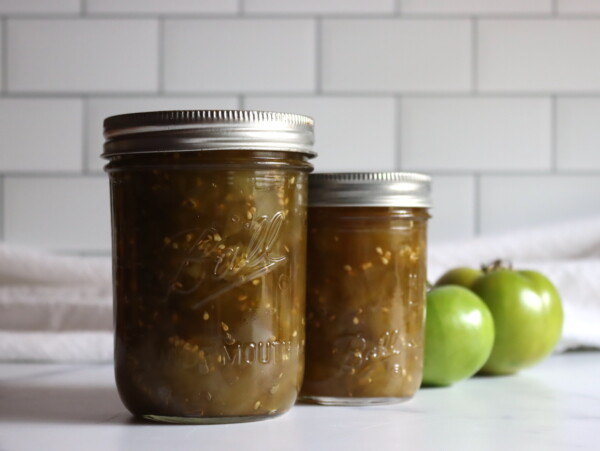
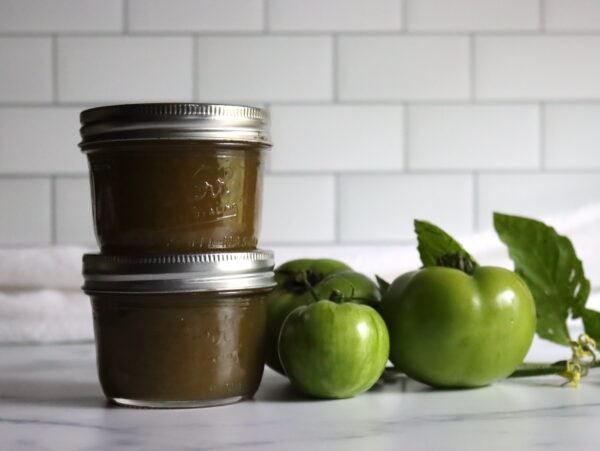

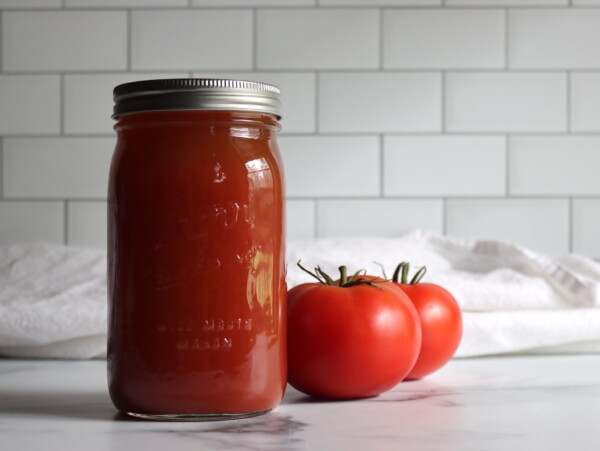
An excellent base recipe. I used a Spanish Red wine, a Tempranillo from Cune cellars. It added to the richness of the sauce. I did puree the roasted tomatoes, onions, and garlic prior to adding to the pot, then I added the seasonings and wine. I added 1/2 tsp Citric acid to each quart jar as I prefer that to lemon juice. The flavor is the best so far, and I have tried 5 or 6 different ones. This is the Keeper.
That sounds amazing!
This was such a great recipe! Thank you for sharing! I used squishy overripe heirloom tomatoes for this so I skipped the roasting and did my best to drain as much liquid as possible before throwing it into the pot. The red wine was the secret flavor bomb, oh my goodness, very robust and rich flavor. After adding the lemon juice, some of the bold flavor dissipated so in the future I might add a splash more wine to maintain the flavor after the lemon juice, or use the citric acid option instead. I can’t wait to use this for dinner, or gift it to my family. Thanks for sharing!
So glad you enjoyed it!